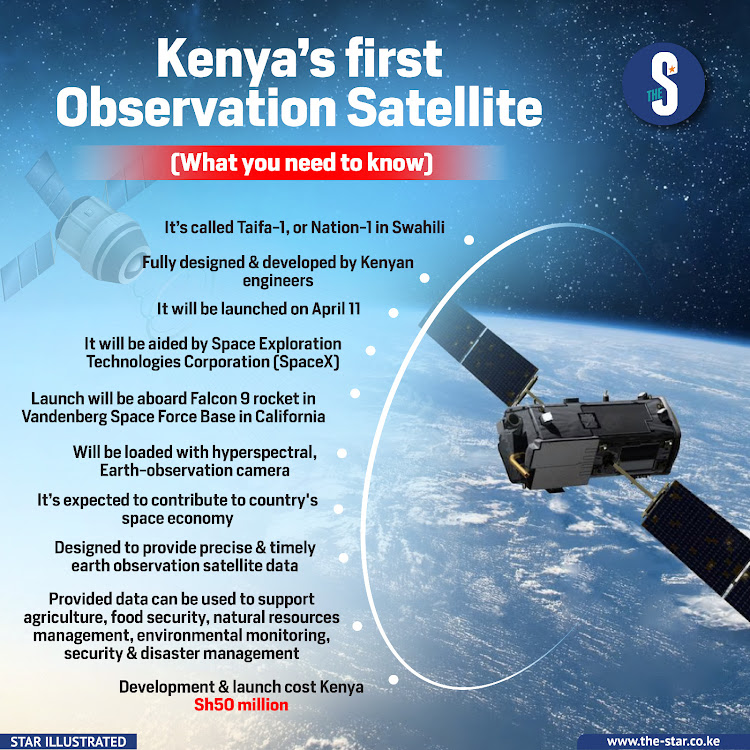Kenya’s first operational Earth observation satellite, “Taifa-1,” was successfully launched into space on April 15th, 2023, using a rocket from Elon Musk’s rocket company, SpaceX. The launch took place from Vandenberg Base in California. The rocket also carried 50 payloads from different countries, including Turkey, under SpaceX’s rideshare program.
 Key Points of Taifa-1
Key Points of Taifa-1
- The Taifa-1 satellite was designed and developed by SayariLabs and EnduroSat over two years at a cost of 50 million Kenyan shillings ($372,000).
- The satellite’s main objective is to collect agricultural and environmental data, including floods, droughts, and wildfires, to help Kenya deal with disaster management and food insecurity.
- Taifa-1 is equipped with an optical camera that can take pictures in both multispectral and panchromatic modes.
- The satellite can operate in and out of the visible light spectrum, allowing it to capture images even in low-light conditions.
- Taifa-1 is capable of capturing images in five different multispectral bands.
- The Ground Sampling Distance (GSD) of Taifa-1 is 32 m for the multispectral band and 16 m for the panchromatic band.





